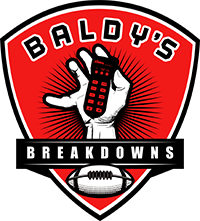
In the high-stakes world of pro football, game strategy reigns supreme. It’s the heartbeat of every play, the masterplan behind every touchdown and game-winning drive. Today, we delve deep into the intricate art of game strategy, where X’s and O’s meet pure brilliance on the gridiron.
The Chessboard of the NFL: Mastering Game Strategy
Every yard matters. Every second counts. In the NFL, where the margin between victory and defeat can be as thin as a blade of grass, game strategy is the lifeline. Dive in with us as we explore the tactical heart of football—a place where quick decisions, in-depth analysis, and an unyielding will to win converge.
The Blueprint: Film Study and Analytics
Arguably, the foundation of any successful game strategy is extensive film study. Coaches and players spend countless hours breaking down footage of their opponents, identifying tendencies, strengths, and weaknesses. This is not merely about watching replays; it’s a meticulous examination of formations, player habits, and play-call patterns.
Analytics, too, have revolutionized how teams approach their strategy. Leveraging data-driven insights, coaches can predict opponent behavior and craft more effective game plans. When done right, this blend of old-school film study and new-age analytics can spell the difference between a Gatorade shower at the end of the season or heading home in disappointment.
Offensive Mastermind: Attacking with Precision
Creating an effective offensive strategy begins by understanding one simple truth: you must keep the defense guessing. A balanced attack with a blend of running and passing plays keeps defenders on their heels. Teams like the Kansas City Chiefs with Patrick Mahomes have perfected the art of unpredictability—sending deep bombs downfield, capitalizing on short-yardage screen passes, and making use of Mahomes’ mobility.
Furthermore, offensive coordinators harness player skill sets, tailoring plays to exploit the full potential of their roster. Dynamic receivers who can stretch the field, versatile tight ends who are both pass catchers and blockers, and dual-threat quarterbacks force defenses into a constant state of adjustment. When executed flawlessly, the offense doesn’t just push for yardage; it dictates the pace and rhythm of the game.
Defensive Genius: Shutting Down the Opposition
On the flip side, a solid defensive strategy is often what wins championships. It’s no surprise that defenses like the 2000 Baltimore Ravens and the more recent 2015 Denver Broncos have etched their names in NFL lore. Defense in football is akin to a chess game—requiring anticipation, smart positioning, and rapid adaptation.
The key to a stout defense lies in disguise and unpredictability. Defensive coordinators frequently shuffle between man and zone coverage to cloud the quarterback’s judgment. Blitz packages—from the likes of the Pittsburgh Steelers or New England Patriots—are designed to pressure and hasten the quarterback’s decision-making, often leading to turnovers.
Moreover, establishing a dominant pass rush, with relentless edge defenders collapsing the pocket, applies unyielding pressure, while a sturdy secondary ensures that there’s no safe haven downfield. A defense that can effectively stymie the opponent’s offense not only prevents points but also gives their own offense better field position, often the critical factor in a close game.
The Importance of Special Teams
Special teams often are unsung heroes in game strategy. A blocked punt, a well-executed fake, or an electric return can change the complexion of a game in moments. This phase of the game is a deceptive marvel of precision and timing. Coaches like John Harbaugh, who rose through the ranks due in part to his expertise in special teams, have demonstrated how indispensable this component is.
Punting strategies, kick placement, and return formations must all be meticulously planned to exploit opponent weaknesses and maximize field position. Teams that excel in special teams, like the New Orleans Saints with perennial Pro Bowler Taysom Hill, often find themselves possessing a hidden edge that can turn the tide of the most arduous encounters.
Coaching: The Art of Adjustments
Game strategy isn’t static; it requires real-time adjustments. This demands exceptional acumen from the coaching staff. As defenses adapt to offensive schemes and vice versa, coaches must be adept at thinking several steps ahead, akin to grandmasters in a heated chess match. Inspirational figures like Bill Belichick and Sean McVay are legends not simply due to preparation but their genius in making in-game adjustments. These timely changes can neutralize an opponent’s rhythm and exploit evolving weaknesses.
Psychology and Momentum
In the heat of competition, psychology plays an enormous role. Coaches wield words like swords, instilling belief, resilience, and aggression in their players. Momentum, an intangible yet undeniable force, can propel a team to victory or plummet them into despair. Ensuring players maintain mental fortitude amidst the shifting currents of a game stands as another pillar of strategic mastery.
The Human Element
At the heart of any strategy lies the human element—passion, skill, grit, and heart. Players, coaching staff, and the collective spirit pulse as a singular entity. Each play can be a poem of precision or power, an ode to undying determination. The unity within the team allows for strategy to transcend mere diagrams and statistics, transforming it into a palpable drive towards victory.
Stay connected with us on social media for more behind-the-scenes insights and breakdowns:
Embrace the thrill, seize the knowledge, and let’s evolve together on this gridiron journey.
